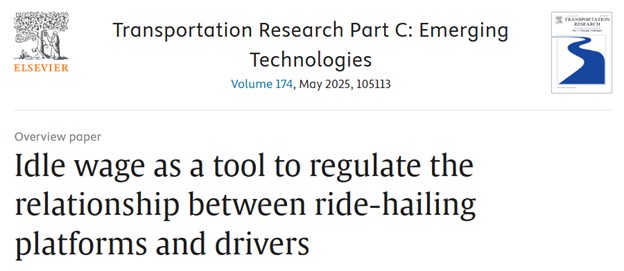Andrés Fielbaum, David Salas, Ruilin Zhang, Francisco Castro
Abstract
Ride-hailing platforms typically classify drivers as either employees or independent contractors. These classifications tend to emphasise either wage certainty or flexibility, but rarely both. We study an alternative or complementary approach: the Idle wage, i.e., a form of payment to the drivers while they are not necessarily transporting passengers, but waiting to be assigned or en-route to pickup a new user.We adapt a well-known economic model of the supply–demand equilibrium in ride-hailing platforms and analyse how the optimal welfare and profit change with the introduction of an Idle wage when drivers are risk-averse. Risk-aversion plays a role, because the Idle wage will always be paid, whereas traditional payments (that still exist in our model) have a random component, namely how many users a driver is assigned to. We show that in a single-period setting, risk aversion implies that it is optimal to pay as much as possible via the Idle wage. However, if the pool of available drivers is large, even a small Idle wage could attract too many drivers, rendering the system unprofitable. When the demand fluctuates throughout multiple periods, we show that if the Idle wage has to be constant, then it is optimal to combine the Idle wage with the traditional payment via trips, so that surge pricing influences the number of drivers connected. This illustrates a relevant trade-off: Risk-aversion favours using the Idle wage to attract drivers; however, if the platform is not allowed to fully adjust the Idle wage over time, there may be periods in which the Idle wage cannot resolve the mismatch between supply and demand. We propose a partially flexible constraint that still relies as much as possible on the Idle wage. It allows the Idle wage to adapt per period, as long as it fulfils a total minimum wage requirement. Numerical simulations suggest that the Idle wage policy, if properly implemented, could be beneficial for the system as a whole.
